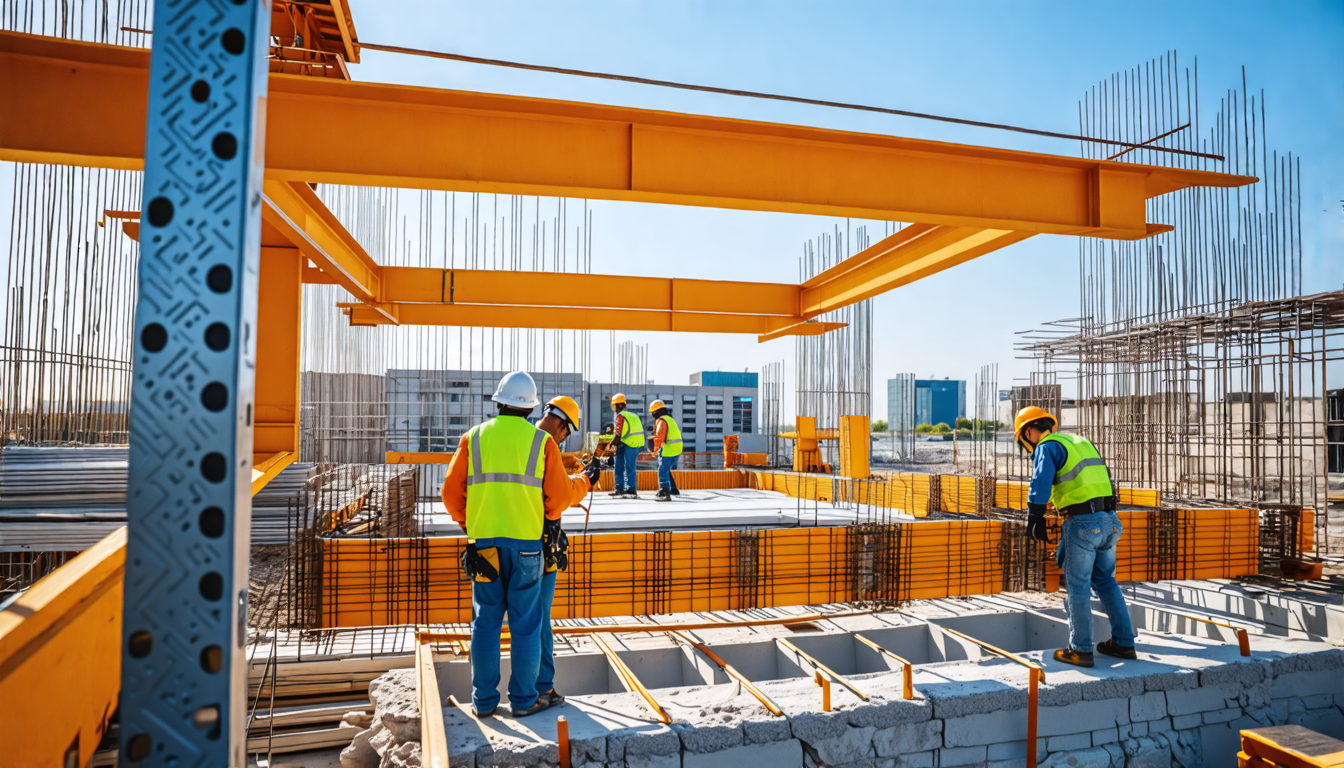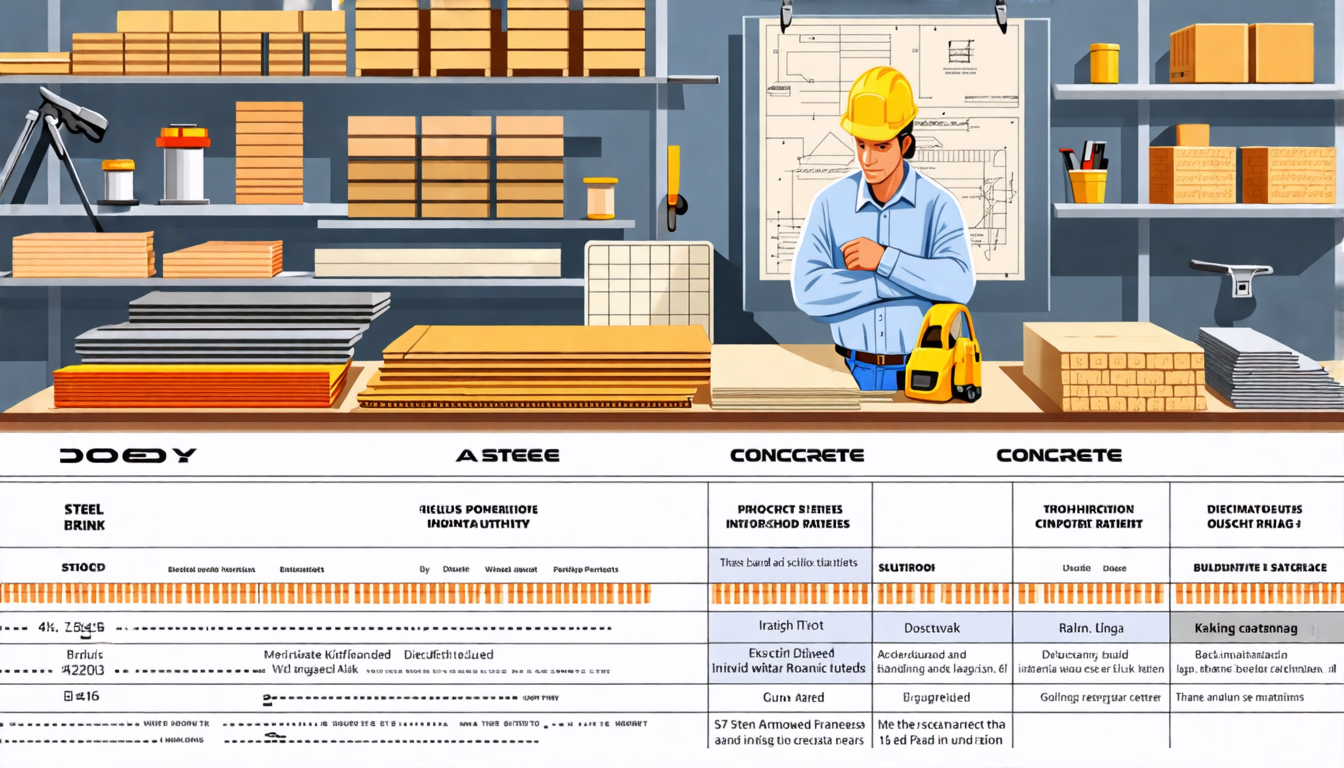When embarking on a construction project, selecting the appropriate materials is a critical decision that impacts the longevity, functionality, and visual appeal of the final structure. Various material options such as wood, metal, polymers, and stone offer distinct advantages and come with their unique considerations. Understanding the nuances of these building materials is essential, including factors like cost-effectiveness, availability in your region, and their sustainability profile. Each material varies in properties such as strength, flexibility, weight, and aesthetic appeal, which should be carefully evaluated in the context of your specific project requirements, whether residential, commercial, or industrial.
In addition to selecting the right materials, maximizing durability is fundamental to ensuring that your construction stands the test of time. Durability encompasses the ability of the building materials to withstand environmental stresses and operational wear. Effective strategies to enhance material durability include applying protective coatings, employing reinforcement methods, and tailoring your choices to suit local climate conditions. Regular maintenance practices, such as periodic inspections, timely repairs, and proactive replacements, further contribute to extending the lifespan of your construction. Exploring case studies of successful and durable construction projects can provide valuable insights and practical lessons, helping you to achieve outstanding results in your own building endeavors.
Understanding Material Options for Your Project
Introduction to Common Building Materials
When embarking on a construction project, whether it’s a home gym or a large-scale commercial structure, choosing the appropriate building materials is vital. The selection of materials can significantly influence the project’s overall cost, aesthetic appeal, and longevity. The most common building materials include wood, metal, polymer, and stone, each offering unique properties and benefits.
Wood has been a staple in construction for centuries due to its versatility and ease of use. It provides a warm, natural aesthetic and can be easily shaped and modified. Metal, including steel and aluminum, provides robust structural support and is often preferred for its strength and durability. Polymer materials, such as PVC and composites, offer a lightweight and often cost-effective alternative with excellent resistance to moisture and chemicals. Stone, known for its impressive durability and timeless appeal, is often used in both functional and decorative elements of construction.
Factors to Consider When Choosing Materials
Several key factors should influence your choice of materials for any construction project. These include cost, availability, and sustainability.
Cost: The budget for your project will play a significant role in material selection. While some materials, like certain types of wood and stone, can be more expensive, others, like polymers, may offer a more budget-friendly option. It’s essential to balance the initial costs with the expected lifespan and maintenance expenses over time.
Availability: The accessibility of materials in your region can influence both the cost and feasibility of your project. Locally sourced materials can reduce transportation costs and support local businesses. Conversely, if a preferred material is not readily available in your area, it might result in higher costs and longer project timelines.
Sustainability: In today’s environmentally conscious world, the sustainability of building materials is a crucial consideration. Opting for sustainable materials, such as recycled metals, reclaimed wood, or eco-friendly polymers, can reduce your project’s environmental footprint. Additionally, sustainable materials can also improve the energy efficiency of structures, leading to long-term cost savings.
Comparison of Material Properties
Understanding the inherent properties of different materials is essential for selecting the best option for your project. Key properties to consider include strength, flexibility, weight, and aesthetic appeal.
Strength: Strength is a critical attribute, particularly for load-bearing applications. Metal, specifically steel, is known for its exceptional strength and ability to support substantial weight. Conversely, wood and polymers may offer sufficient strength for less demanding applications but require careful consideration of load-bearing capacities.
Flexibility: Flexibility is crucial in applications where materials need to withstand various forces without breaking. Wood and certain polymers are known for their flexibility, making them suitable for projects requiring some degree of give. Metals like steel offer much less flexibility, albeit with a notable increase in strength.
Weight: The weight of building materials can impact both the ease of construction and the structural requirements of a building. Metals tend to be heavier, which can add to the structural load but also enhance stability. Lighter materials like aluminum and certain polymers or composites can reduce the structural burden and simplify installation processes.
Aesthetic Appeal: The visual impact of your chosen materials can significantly influence the overall look and feel of your project. Wood offers a warm, organic feel, while metals provide a sleek, modern aesthetic. Polymers can be manufactured in a wide range of colors and finishes, offering versatility in design. Stone lends a timeless, classic appeal, ideal for both rustic and elegant applications.
Choosing the Right Material for Specific Projects
The choice of material should align with the specific requirements of your project, whether residential, commercial, or industrial.
Residential Projects: For residential construction, the focus is often on creating a comfortable, aesthetically pleasing environment. Wood is a popular choice for its warmth and versatility, making it ideal for interior features like flooring and cabinetry. For exterior applications, sustainability and weather resistance become crucial, making treated wood, polymer composites, or certain metals excellent choices.
Commercial Projects: Commercial buildings often require materials that offer a balance of durability, cost-effectiveness, and aesthetic appeal. Steel and aluminum are favored for their strength and modern look, suitable for structural frameworks and large facades. Polymers can be utilized for interior elements that require easy maintenance and adaptability to various design needs.
Industrial Projects: Industrial construction focuses heavily on durability and functionality. The robustness of materials like steel and reinforced concrete makes them ideal for handling the stress and wear typical in industrial settings. Polymers that are resistant to chemicals and moisture can also play a role in certain industrial applications.
Choosing the right material involves a holistic approach, considering the specific use-case requirements, budget constraints, and desired longevity and performance of the final structure. Making informed choices about materials is a cornerstone in building projects that meet both aesthetic and practical needs, ensuring satisfaction for years to come.

Maximizing Durability in Construction
When it comes to construction projects, durability is a critical factor that cannot be overlooked. Durability refers to the ability of a material or structure to withstand wear, pressure, or damage over time. In the context of building projects, maximizing durability ensures that structures remain safe, functional, and aesthetically pleasing for the longest time possible. This not only safeguards the investment but also contributes to sustainability by reducing the need for frequent repairs and replacements.
Techniques to Enhance Material Durability
There are several techniques you can employ to enhance the durability of construction materials, including:
- Protective Coatings: Applying protective coatings such as paints, sealants, and varnishes can significantly extend the life of construction materials. These coatings provide a barrier that protects against environmental factors like moisture, UV rays, and chemical exposure. For example, using weather-resistant paint on wood or applying a sealant to concrete can prevent water infiltration and reduce the risk of rot or corrosion.
- Reinforcement Methods: Reinforcement involves strengthening materials to handle greater stress and load. Common techniques include adding steel rebar to concrete to increase its tensile strength, or using fibers in polymer materials to enhance their durability. Reinforced materials are particularly crucial in areas prone to natural disasters like earthquakes or hurricanes, where additional strength can prevent catastrophic failure.
- Climate Considerations: The local climate plays a significant role in material durability. In environments with high humidity, materials need to resist mold and moisture damage. In contrast, areas with extreme temperature fluctuations require materials that can expand and contract without cracking. Selecting materials designed to withstand the specific climate conditions of a region can prevent premature deterioration and failure.
Maintenance Practices to Extend Longevity
Even the most durable materials require regular maintenance to retain their structural integrity over time. Some best practices include:
- Regular Inspections: Conducting regular inspections allows for the early detection of wear and tear, enabling timely repairs before issues become severe. Inspections should be thorough, covering essential components like foundations, roofing, and support structures.
- Repair Methods: When damage is identified, using appropriate repair methods can restore the material’s strength and functionality. For instance, filling cracks in concrete, replacing corroded metal components, or resealing gaps in wooden structures can prevent further deterioration.
- Replacements: Some materials have a finite lifespan and will need to be replaced periodically. Keeping track of the age and condition of critical components ensures that replacements are made proactively rather than reactively, minimizing disruption and maintaining structural integrity.
Case Studies of Durable Construction Projects
To illustrate the principles of durability in action, consider the following successful examples:
- The Burj Khalifa, Dubai: The world’s tallest building uses high-strength concrete reinforced with steel to withstand the harsh desert environment. The structure also includes a cladding system designed to minimize thermal expansion due to temperature fluctuations, enhancing its longevity.
- The Sagrada Familia, Barcelona: This iconic basilica, under construction for over a century, uses a combination of stone and reinforced concrete. Continuous maintenance and restoration efforts ensure its structural integrity while preserving its historical and aesthetic value.
- The Sydney Opera House, Australia: The iconic structure features a series of concrete shells covered with tiles designed to withstand the coastal climate’s salt, wind, and sunlight. A comprehensive maintenance program includes regular inspections and repairs to keep the building in pristine condition.
By employing these techniques and practices, construction projects can achieve maximum durability, ensuring safety, sustainability, and long-term value.
In conclusion, selecting the appropriate materials for your building projects is a multifaceted process that requires a thorough understanding of available options and a careful consideration of various factors such as cost, availability, and sustainability. Each material—whether it be wood, metal, polymer, or stone—offers unique properties that can significantly impact the performance, aesthetics, and overall success of your project. When evaluating materials, it’s essential to compare their strength, flexibility, weight, and visual appeal to ensure they meet the specific needs of residential, commercial, or industrial applications.
Equally important is the focus on maximizing durability to ensure the longevity and resilience of your construction. Durability is a critical aspect of any building project, and achieving it involves selecting the right materials and employing techniques such as protective coatings, reinforcement methods, and climate-specific considerations. Regular maintenance practices, like inspections, timely repairs, and strategic replacements, are integral to prolonging the life of construction materials.
The study of durable construction projects provides valuable insights into effective strategies and potential pitfalls to avoid. By learning from successful examples, and adopting best practices in material choice and durability enhancement, you can create structures that are not only functional and aesthetically pleasing but also built to withstand the test of time. Choices made in the planning and execution phases will profoundly influence the longevity and reliability of your construction, making material selection and durability planning essential components of any building endeavor.

